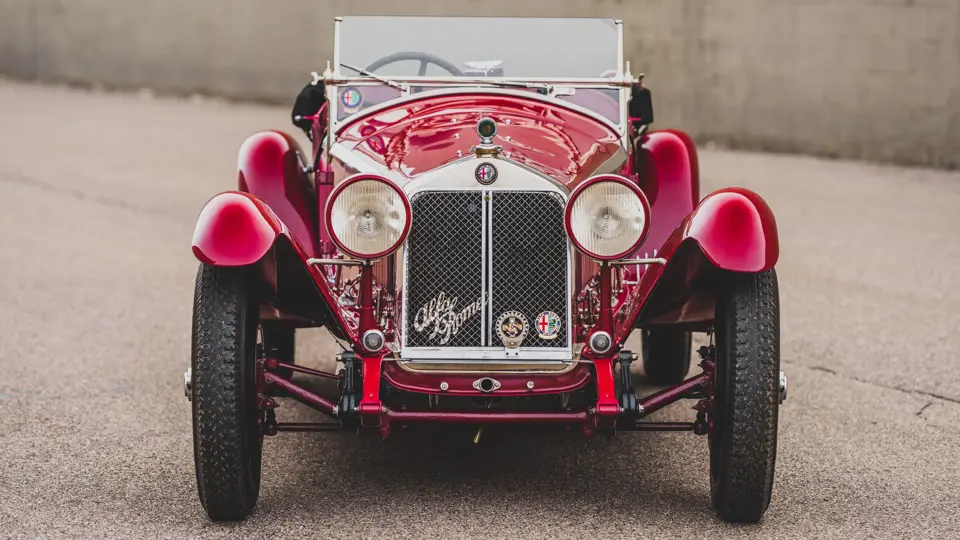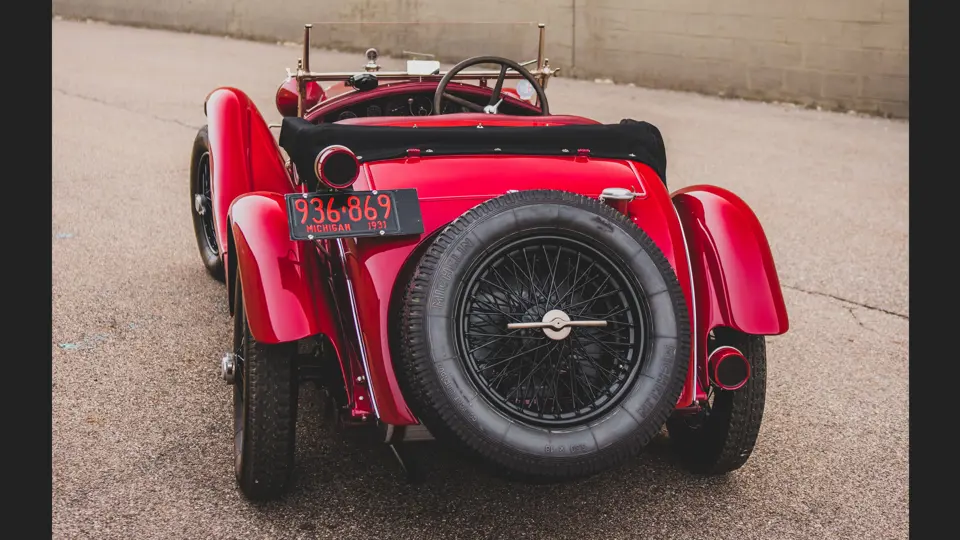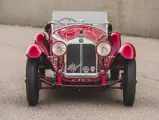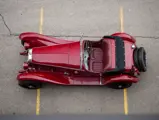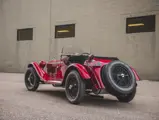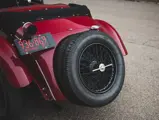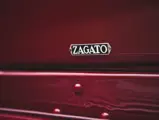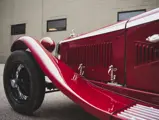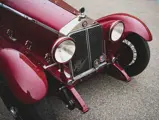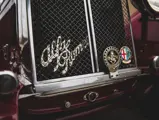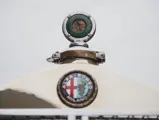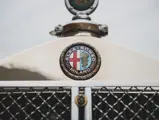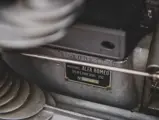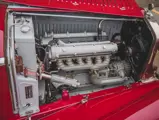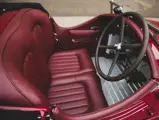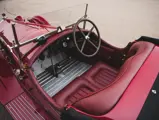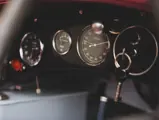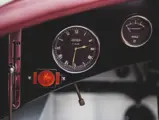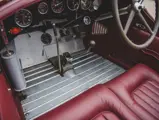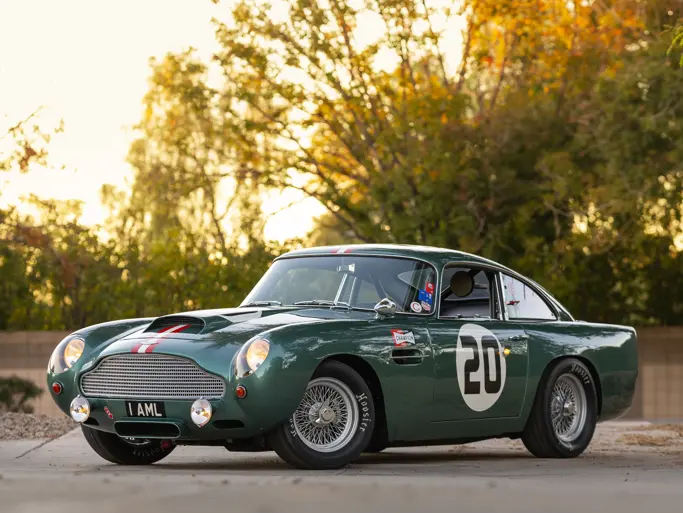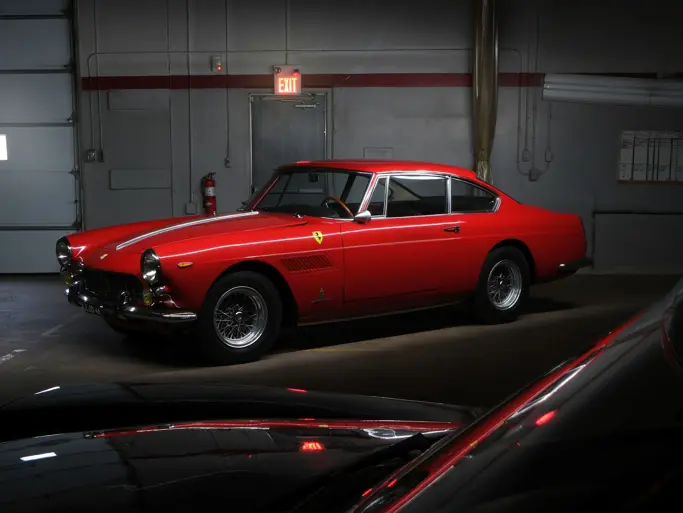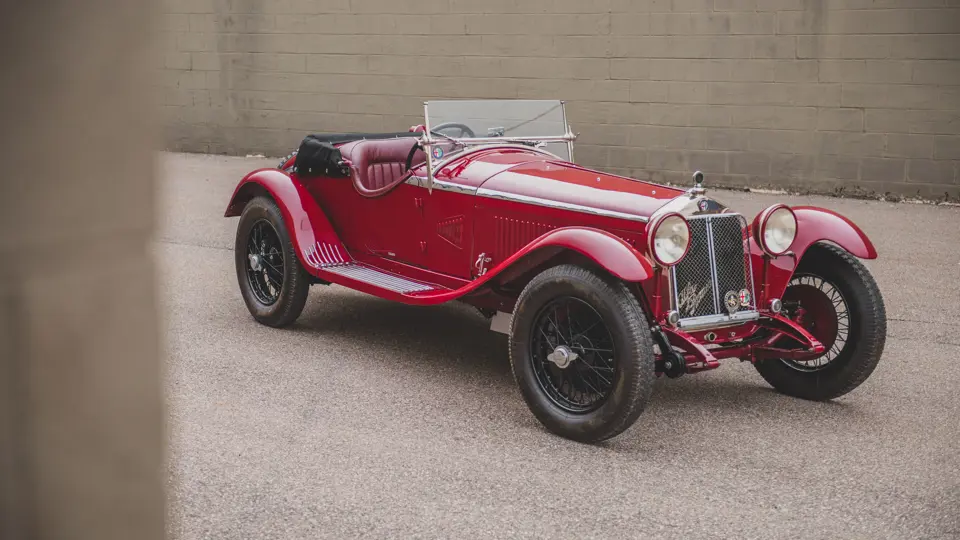
1931 Alfa Romeo 6C 1750 Gran Sport Spider by Zagato
{{lr.item.text}}
Sold
Offered From The Terence E. Adderley Collection
{{bidding.lot.reserveStatusFormatted}}
- Offered from the Terence E. Adderley Collection
- One of 76 examples built in 1931
- Approximately the 13th of 106 total examples built
- Comprehensive three-year restoration in Switzerland completed in early 2009
- Exhibited at the 2012 Pebble Beach Concours d’Elegance and the 2019 Concours d’Elegance of America
- Benefits from recent freshening by RM Auto Restoration
- Beautifully presented example of Alfa Romeo’s six-cylinder interwar racing legend
THE EVOLUTION OF MILAN’S 6C
Alfa Romeo’s celebrated 6C can arguably be attributed to the endeavors of one man, the brilliant engineer Vittorio Jano. The proverbial triple-threat, Jano was a masterful technical designer who also supervised field testing and formulated race strategy. In 1923 the young engineer was lured away from Fiat by one Enzo Ferrari to join Alfa Romeo, where he would make history with a series of highly successful designs.
After developing the P2 grand prix car into a perennial winner, Jano was promoted to Milan’s head of design in 1926, and soon after he began building a new touring model centered upon an overhead-cam 1.5-liter inline-six engine. The resulting 6C 1500 entered production in 1927, soon to be complemented by an uprated Sport version with twin-cam valve actuation. Riding a 114-inch wheelbase, this model was generally clothed in saloon and four-seat tourer coachwork.
In 1929 the model’s sporting identity was ratcheted up with the debut of the 6C 1500 Super Sport, which was optionally equipped with a Roots supercharger, and mounted with two-seat spider coachwork. By the end of the year displacement was increased to 1,752 cubic centimeters, giving way to the 6C 1750, which was generally built on a longer 122-inch wheelbase chassis and equipped with a single-cam engine under the nomenclature of Turismo.
A minority of the 6C 1750 examples were completed as Sport variants (later dubbed Gran Turismo) built on the 114-inch wheelbase chassis and powered by the twin-cam engine. The range-leading performance iteration was the Super Sport, which rode a shortened 108-inch wheelbase chassis, and could be ordered with a finned alloy supercharger and intake manifold, and mounted with coachwork by Castagna, Touring, or Zagato.
In 1930 the Super Sport was supplanted by the Gran Sport, which was distinguishable by a new sloping grille that increased the radiator’s surface area for improved cooling, while lending the car a more rakish appearance. Fitted with the Roots supercharger, the fifth-series 6C 1750 Gran Sport developed an unprecedented 85 horsepower, and was built in a modest quantity of just 106 examples during 1931 and 1932; relatively few of these survive today. The 6C 1750 scored five major victories in 1929 alone, including Giuseppe Campari’s triumph at the Mille Miglia, and it proceeded to sweep the podium at the 1930 Tourist Trophy and the 1930 Mille Miglia, setting the stage for epic duels between legendary factory drivers Achille Varzi and Tazio Nuvolari.
Possessing such beautiful open coachwork, advanced mechanical engineering, and a remarkable competition pedigree, it is hardly surprising that the 6C 1750 Gran Sport has grown to be a darling among discerning marque collectors. Well-maintained examples are reputed to be highly rewarding driver’s machines that abound in light, connected steering, impressive cornering, and plenty of supercharged power. For these reasons the model remains a favorite within the collector car niche, whether enjoyed during vintage touring and racing events or admired at concours d’elegance.
CHASSIS NUMBER 10814313
Benefiting from an exacting European restoration completed in 2009, and a recent freshening by RM Auto Restoration, this splendid spider is a highly desirable example of Alfa Romeo’s celebrated 6C. Unfortunately, due to the wartime destruction of many factory records, the details of this car’s completion and early history are currently unknown. By virtue of its chassis number, however, we can conclude that 10814313 is the 13th example completed in numerical sequence.
According to a Swiss registration on file, this 6C 1750 was first registered in 1933, and by 1950 the car had passed to a 20-year-old Geneva-based student named Lucien Dorier. In June 1950 Dorier sold the spider to Guido Arioli, a salesman residing in nearby Tinizong.
By the early 2000s the Alfa Romeo was acquired by the respected Swiss collector Peter Groh, suggesting that the car may have lived the majority its life within Switzerland. Mr. Groh commissioned a comprehensive restoration in 2005 that took over three years to complete. According to invoices on file, Ivo Buschor of Schocherswil, Switzerland, was entrusted to rebuild the engine, carburetor, gearbox, clutch, steering column, axles, and brakes, with additional work being performed on the fuel and electrical systems.
The body and cockpit were disassembled, rebuilt, and refinished, the instrument panel was refurbished, and the seats were reupholstered. Completed in early 2009, the restoration totaled over 110,000 Swiss francs, and it resulted in an authentically restored vintage speed machine that could be presented at the world’s most exclusive concours d’elegance.
In 2011 Mr. Groh sold the Alfa Romeo to an American collector based in Texas, and he exhibited the spider at the 2012 Pebble Beach Concours d’Elegance. During his four years of ownership the 6C was ideally maintained in a climate-controlled storage facility, while occasionally being exercised to keep the car as fresh as possible.
In March 2015 the Alfa Romeo was acquired by Mr. Adderley. Continuing to enjoy the benefits of climate-controlled storage, the Gran Sport became a centerpiece display of Mr. Adderley’s collection, in a dutiful preservation of the expert restoration. Among very few public appearances during this period, the spider was presented at the 2019 Concours d’Elegance of America. In preparation for its current offering the car was recently submitted to RM Auto Restoration for a minor round of sympathetic freshening.
According to correspondence with Italian car expert John De Boer, this 6C 1750 retains numerous components that appear to be period-correct, as suggested by the stamped numbering of the chassis, engine, and crankcase. Similarly, the numbering of the Memini carburetor, front axle, rear axle housing, and CWP gear carrier suggest that these components are also period-correct. Body number 917 is consistently stamped on the windscreen, hood-hinge, and floorboards, while fascinating pencil markings of 917 are found on the inside of the wooden door panels and the trunk lid.
Accompanied by a period owner’s manual and parts catalogue, chassis number 10814313 is a sensational example of a verifiable racing legend. Epitomizing one of Milan’s most esteemed and significant interwar automobiles, this car can expect a warm welcome at premium vintage events worldwide, sure to impress with its driver-oriented performance and remarkable authenticity.







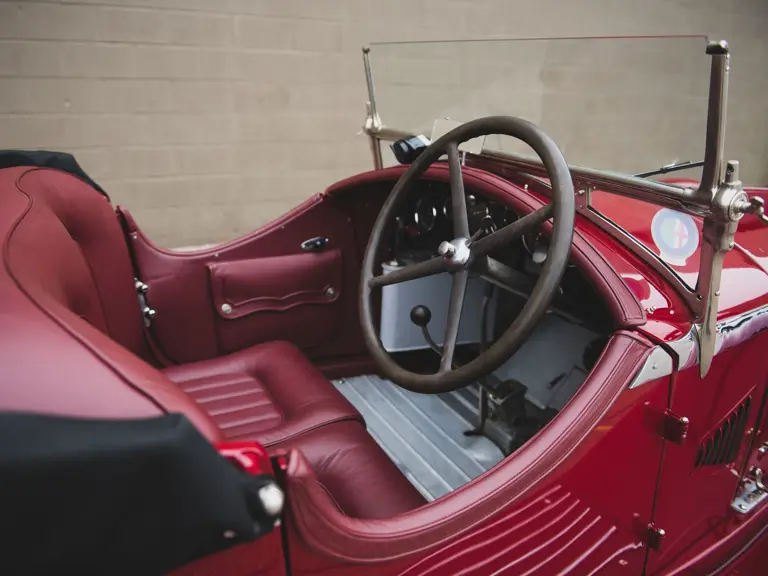
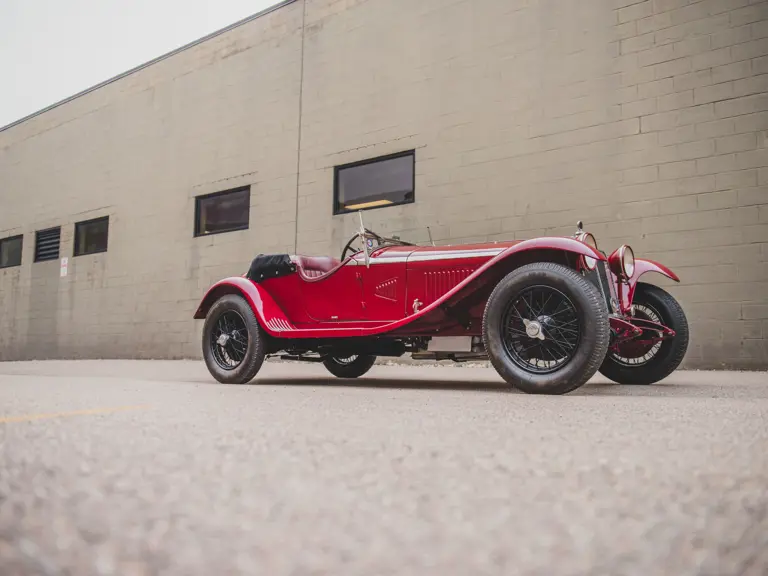
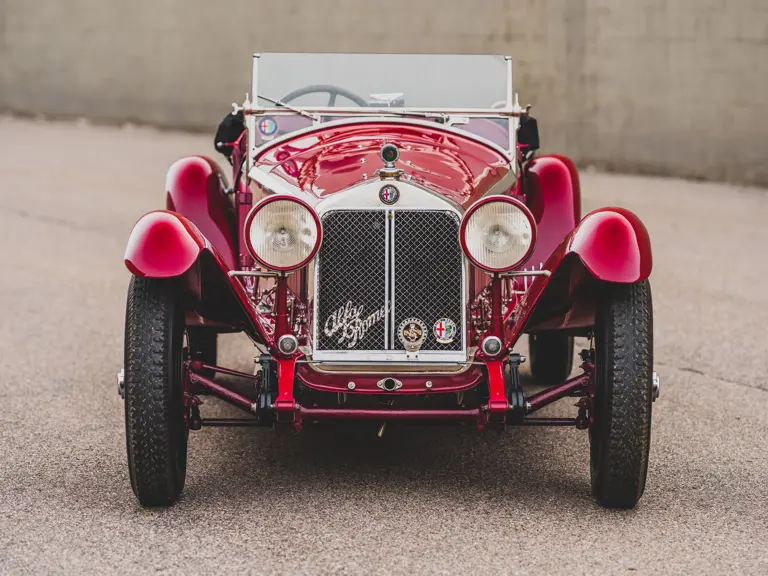
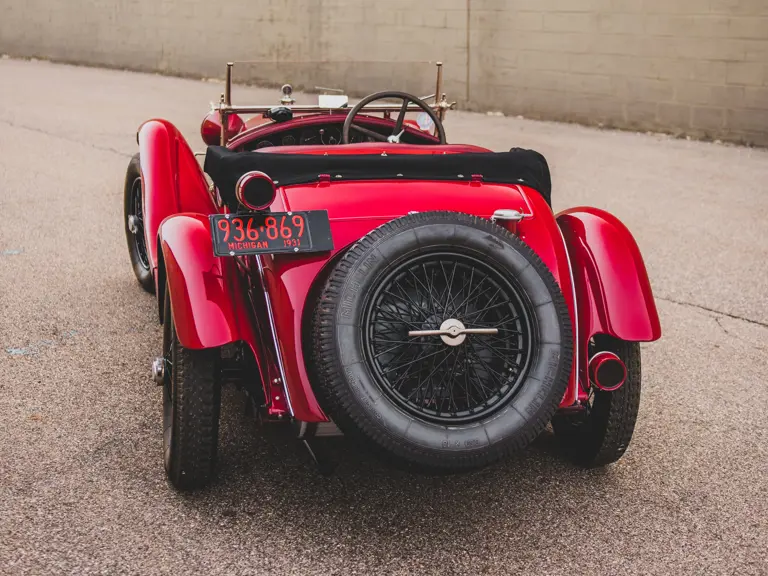

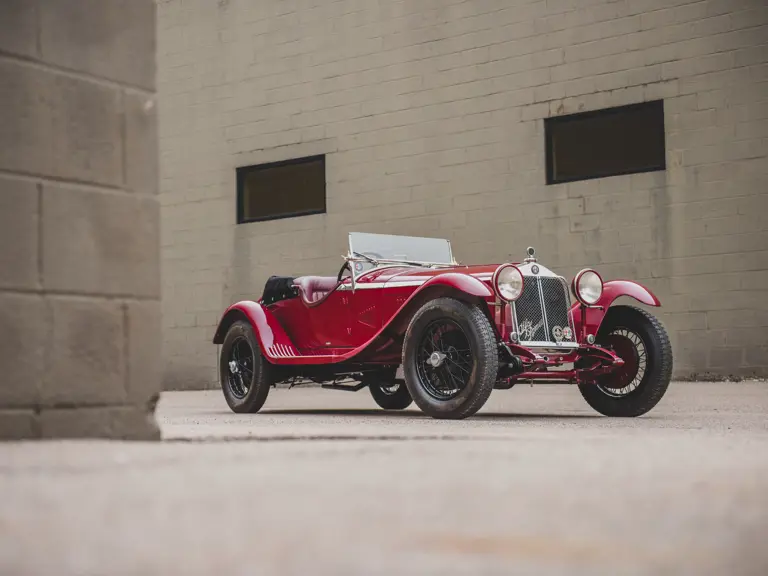
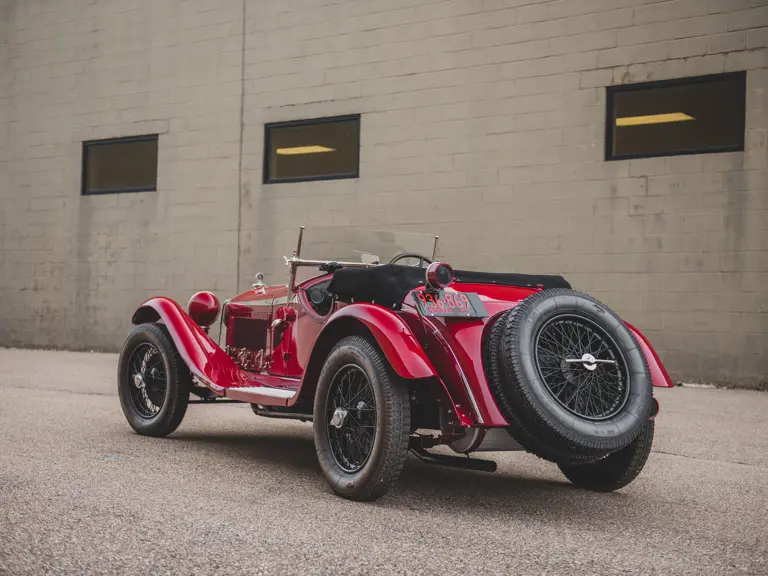
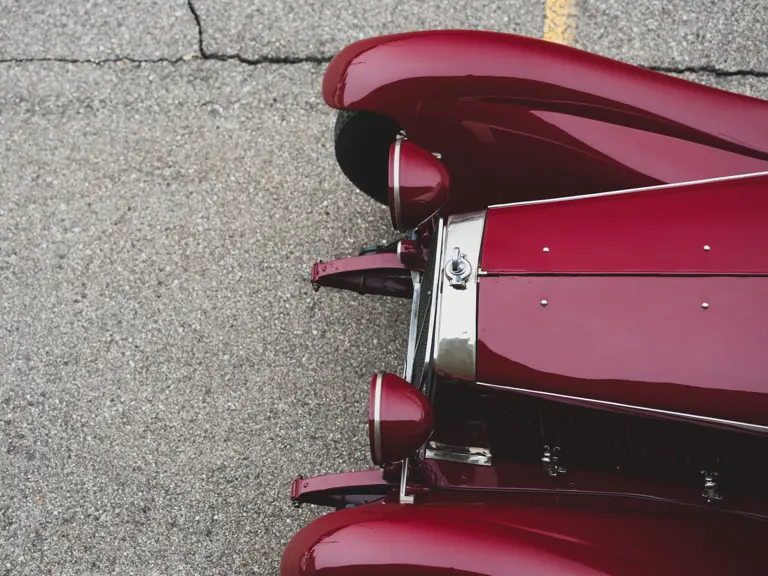
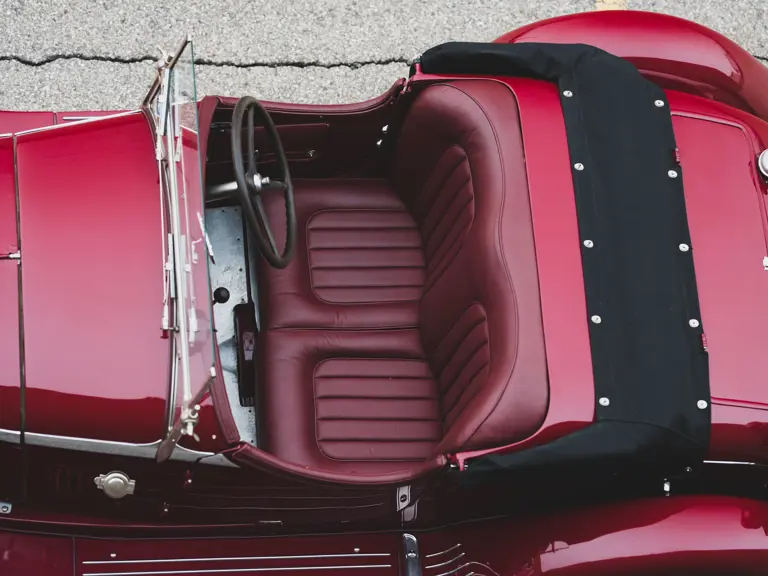
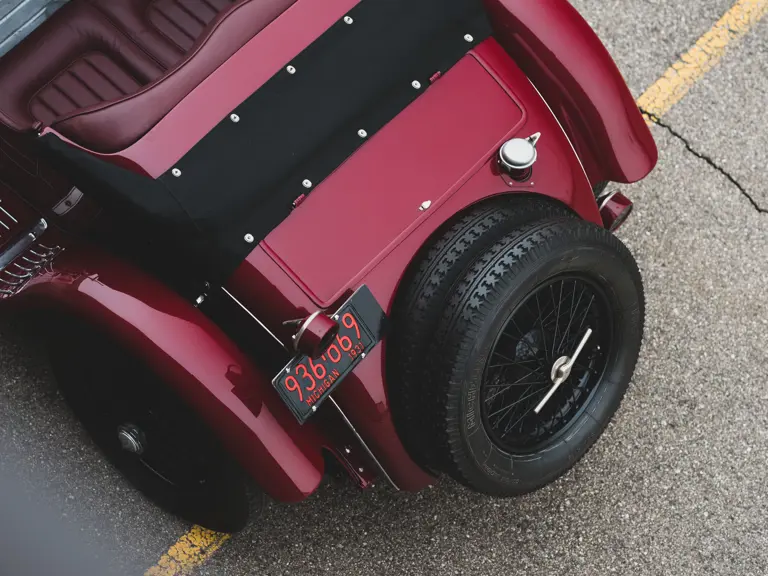
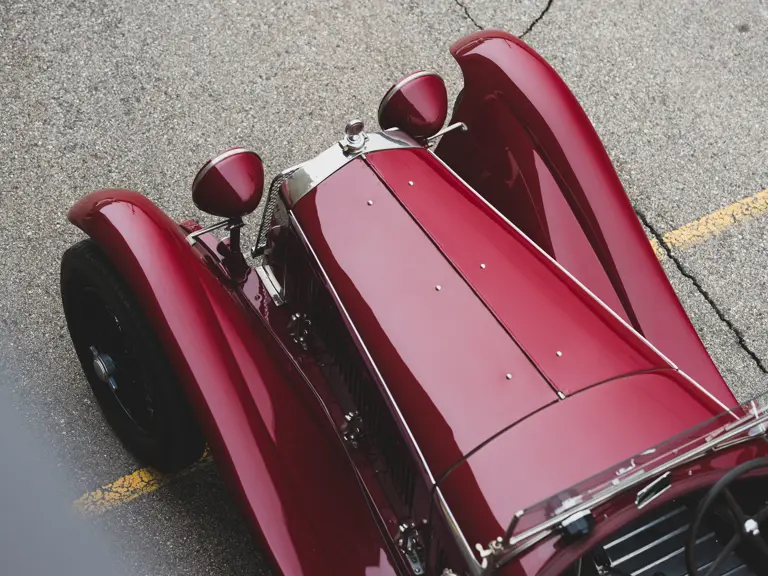
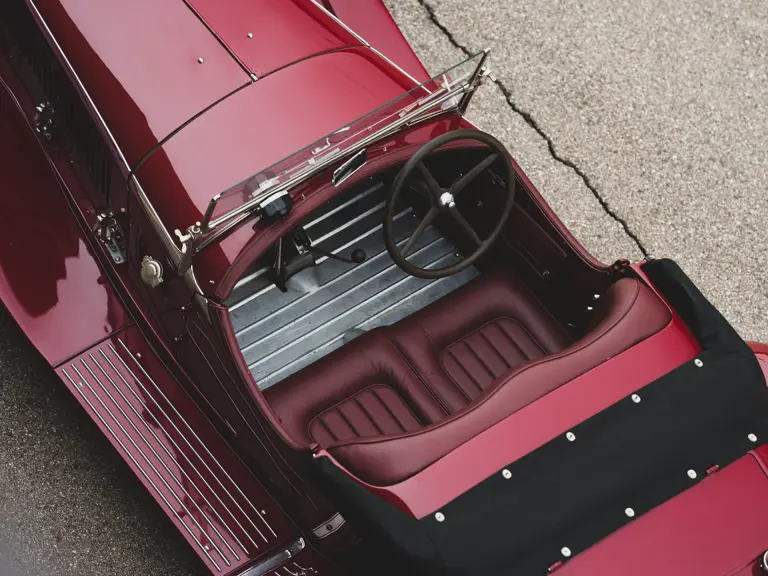


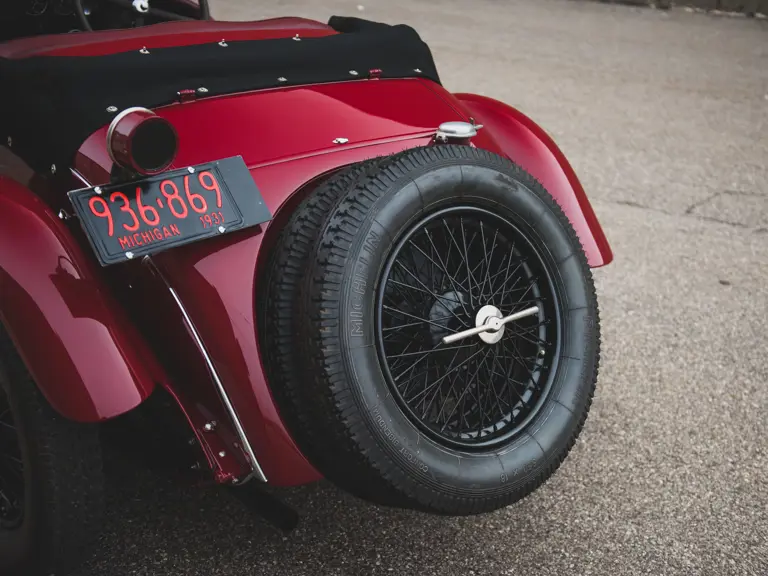
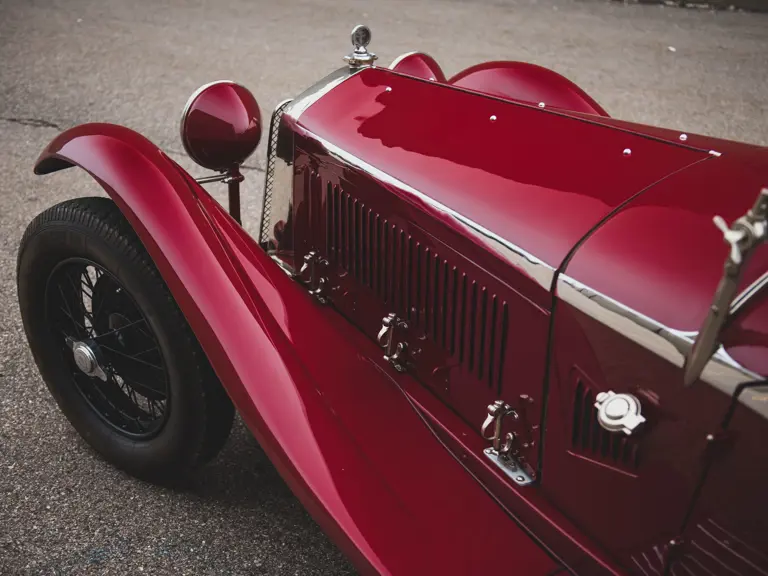


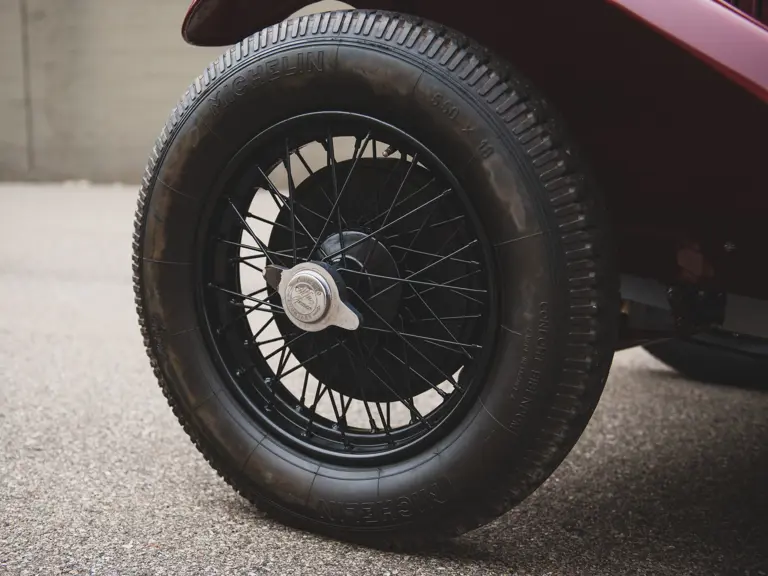

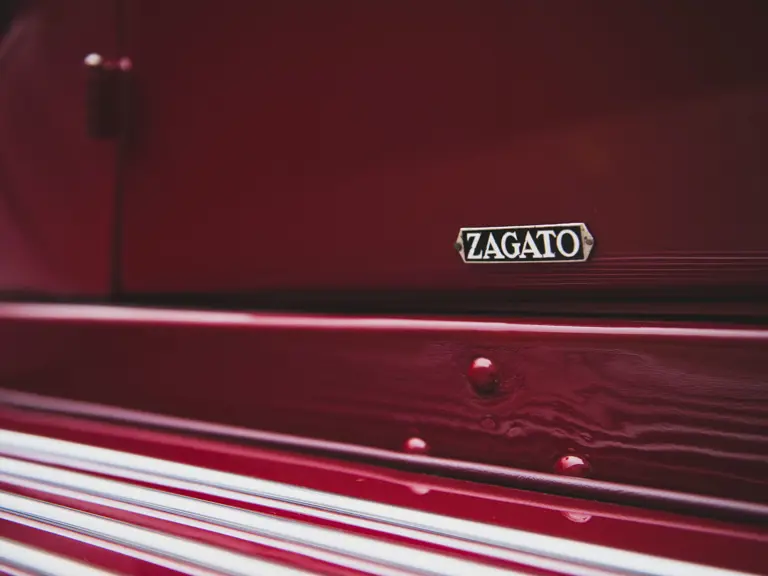

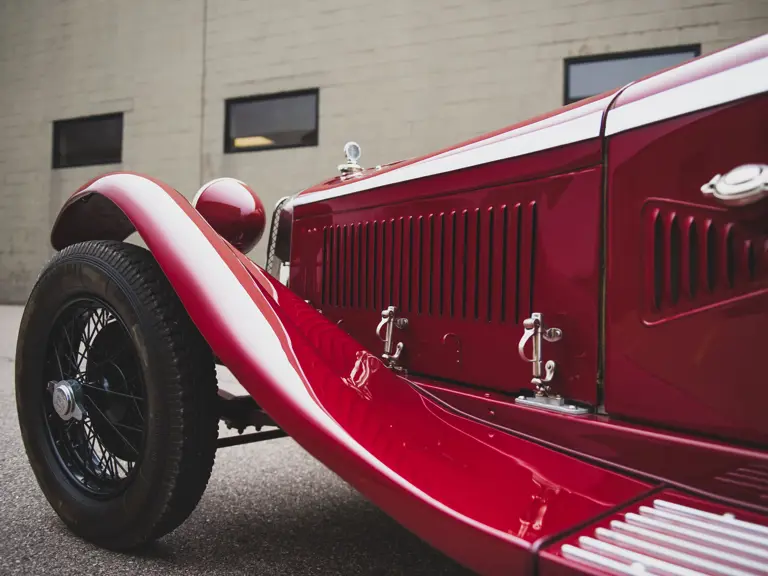
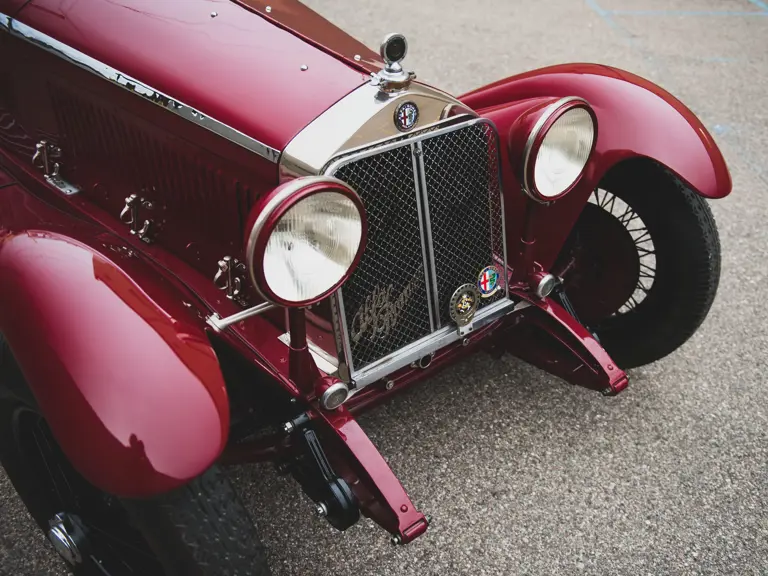

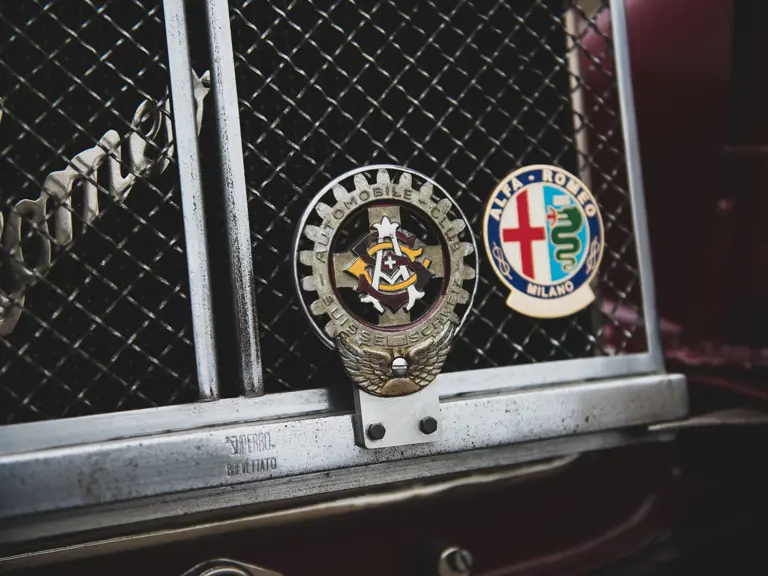

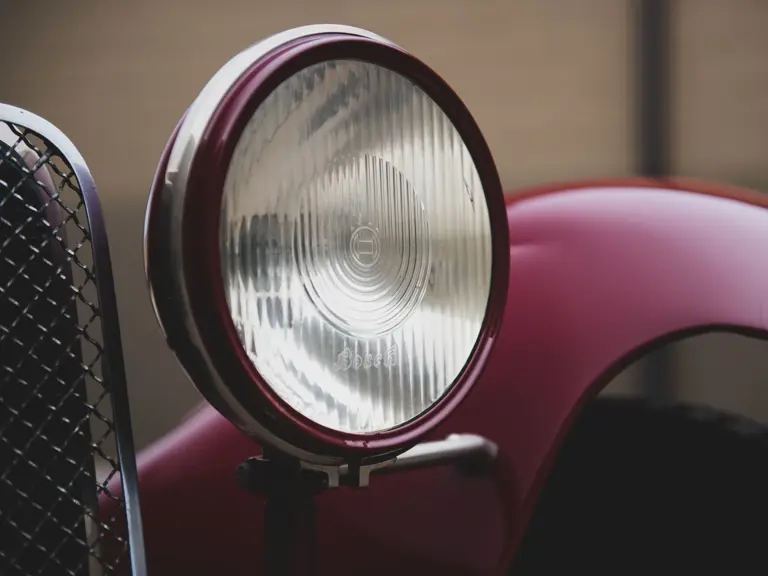

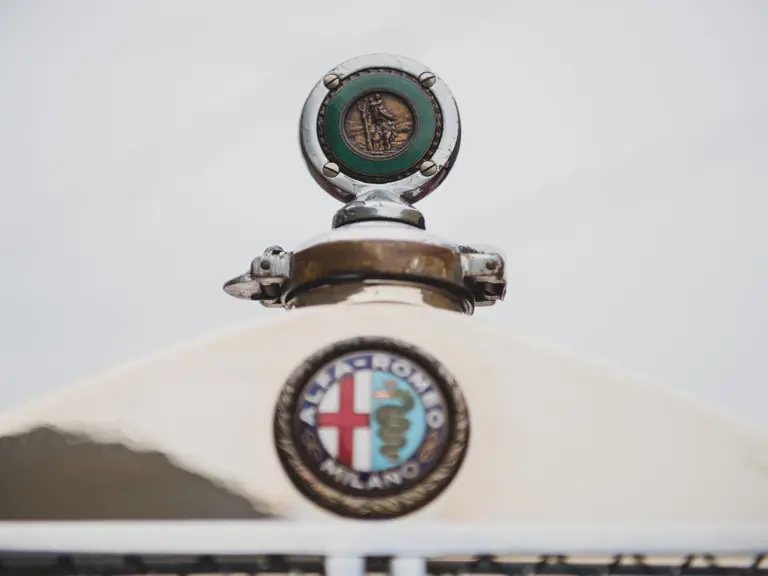
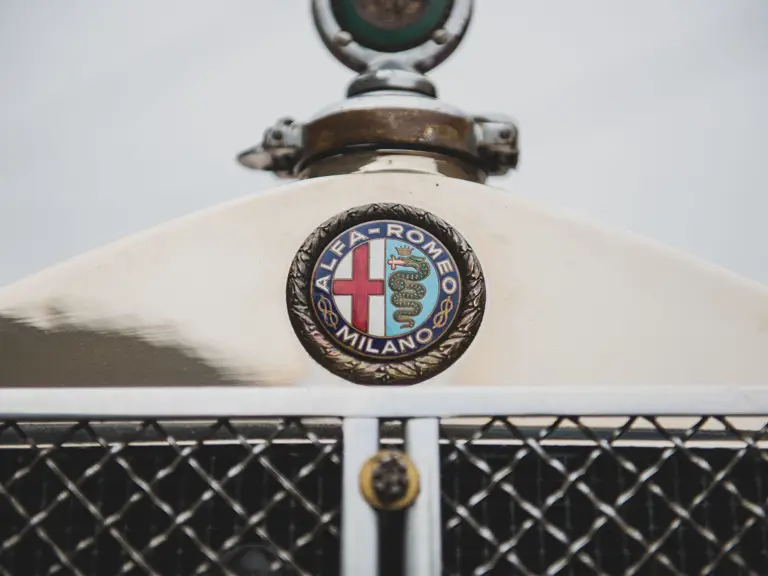
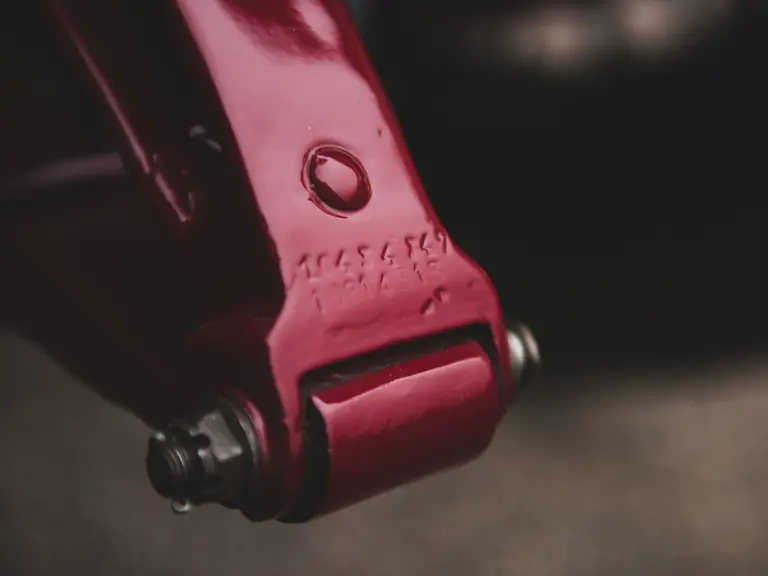
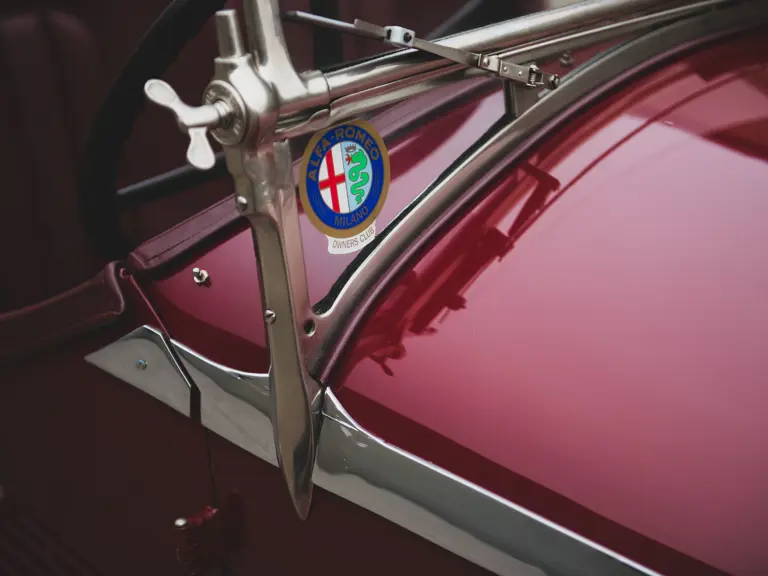
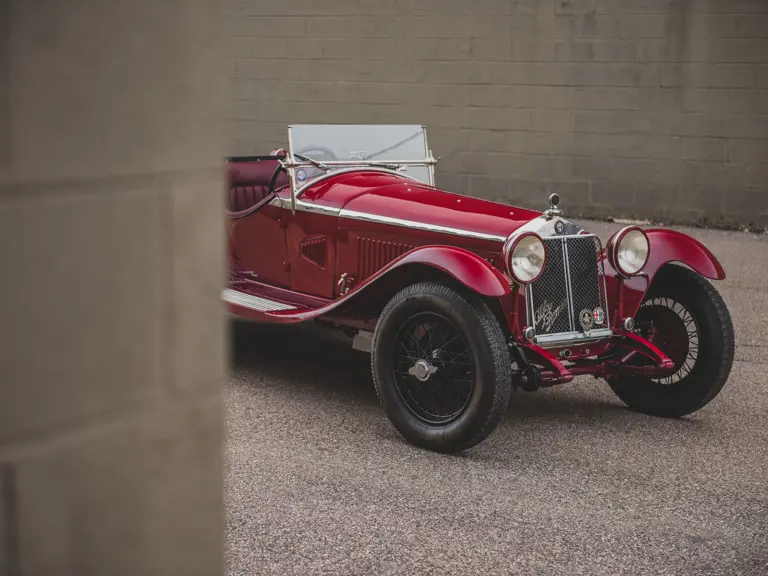
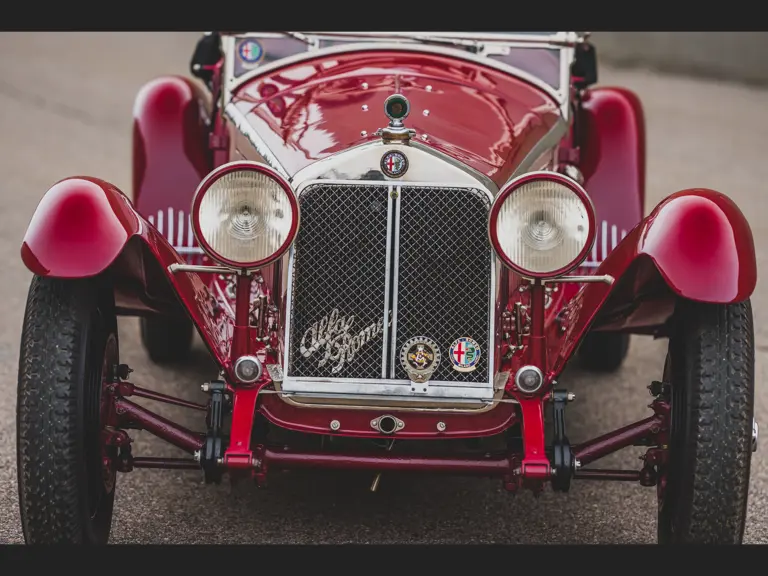
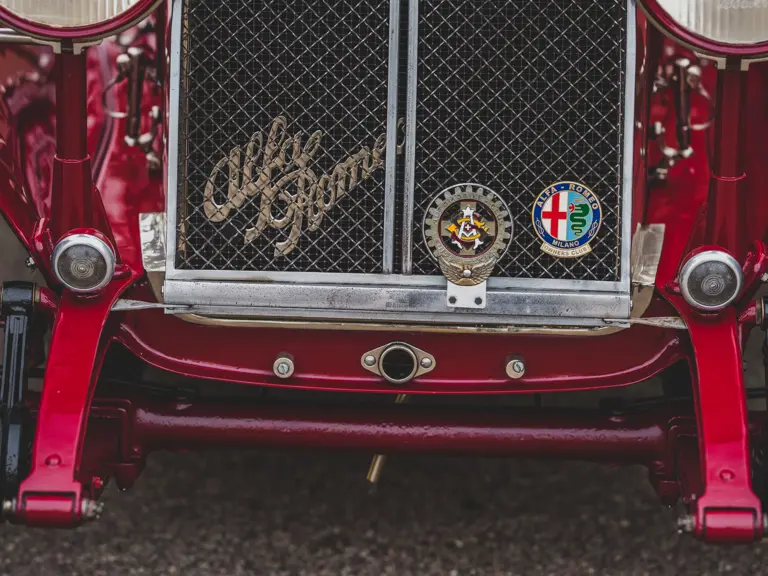

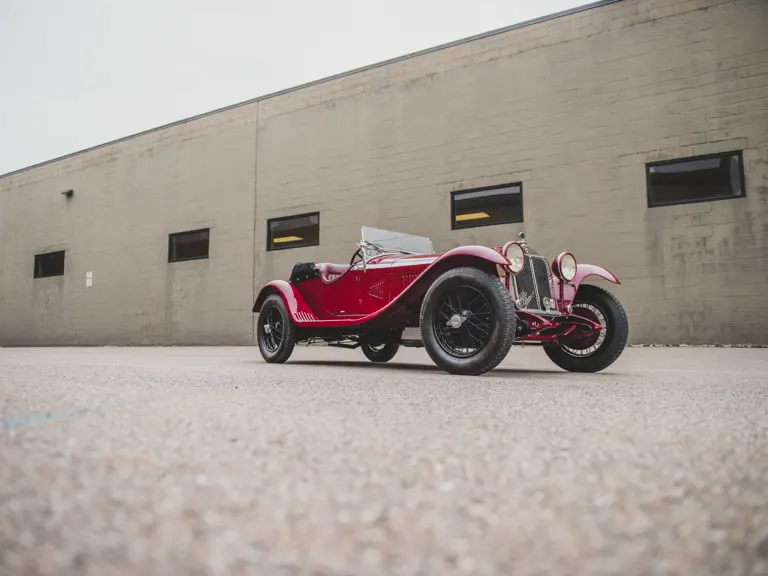


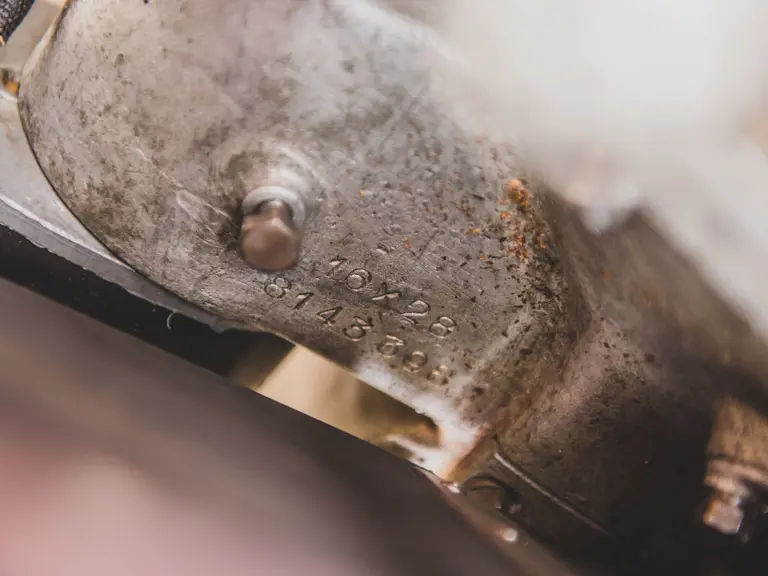
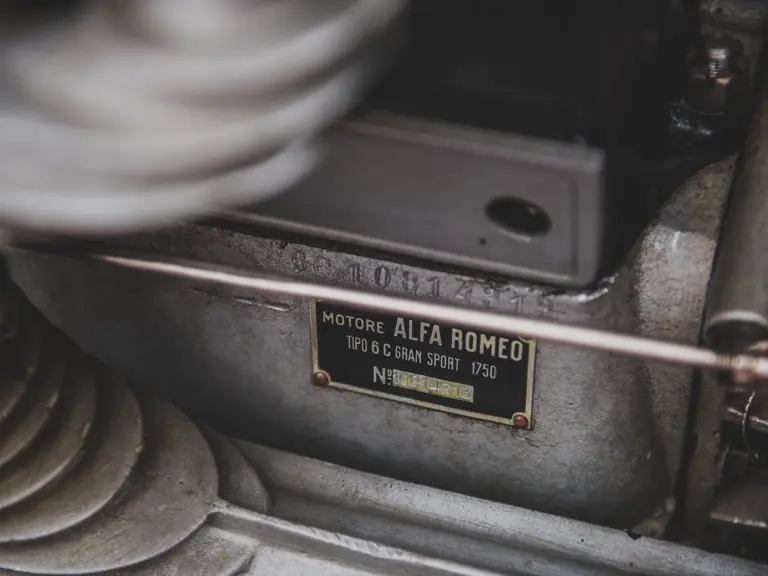

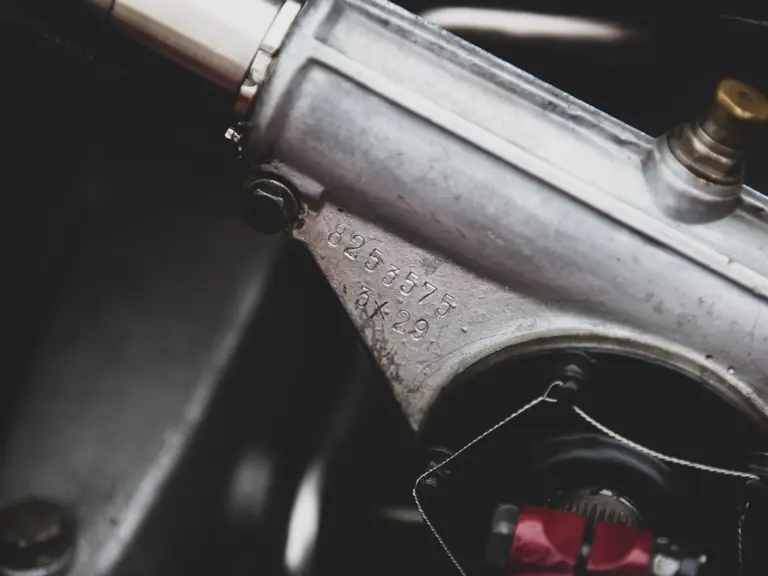

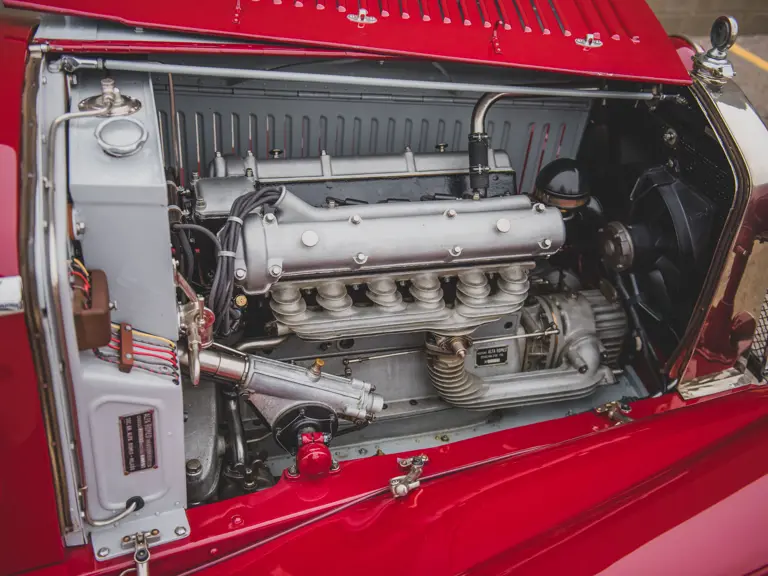
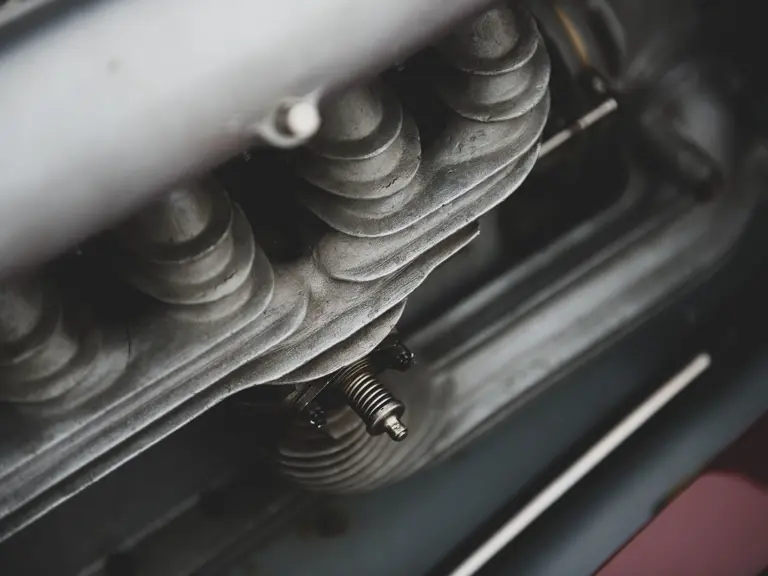
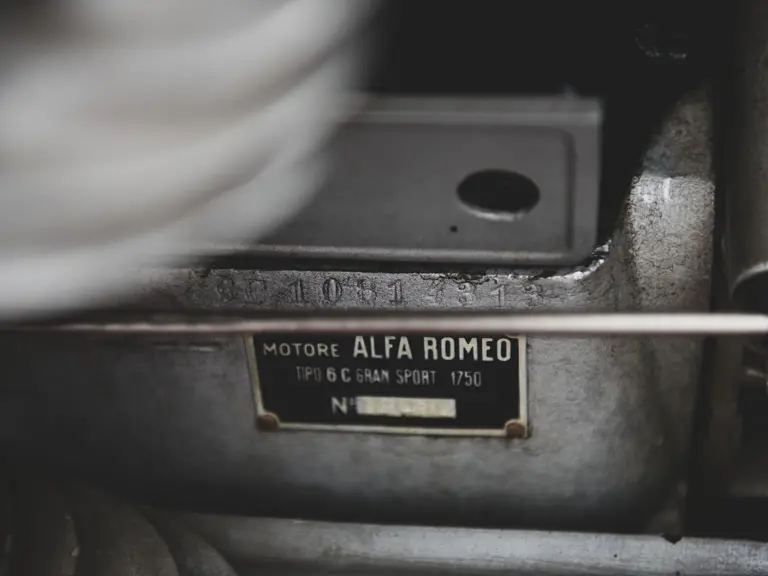

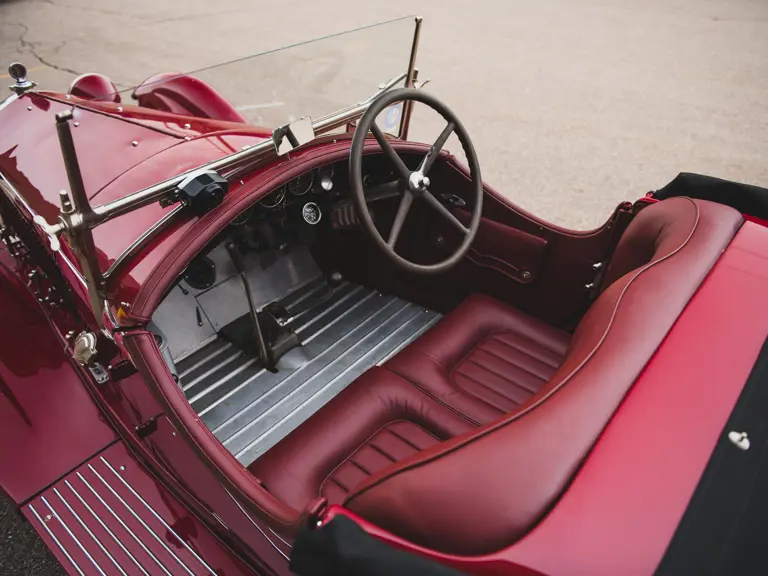
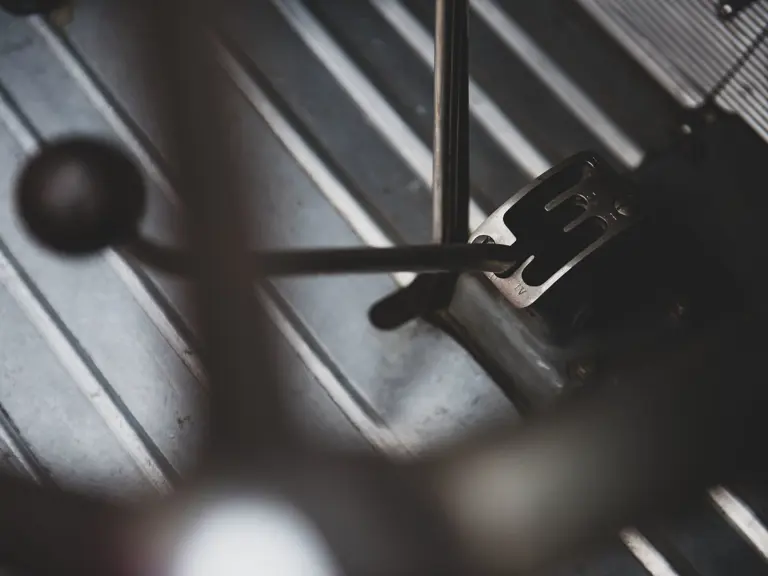


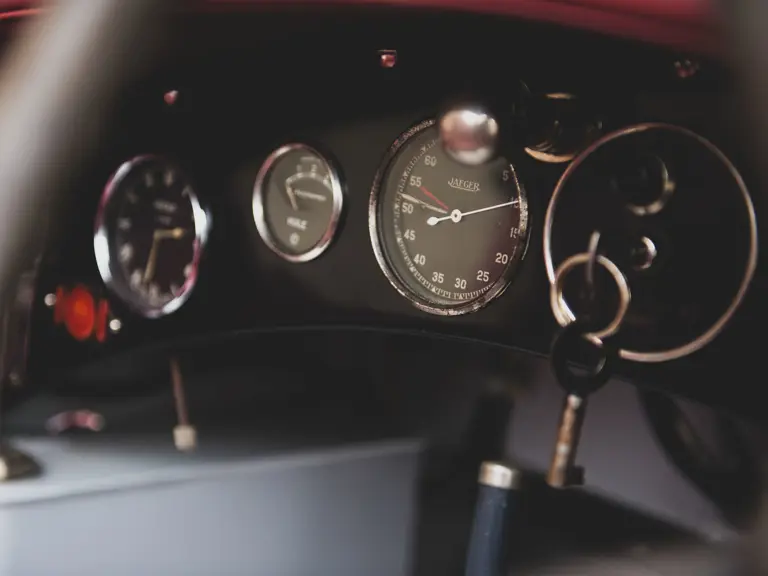
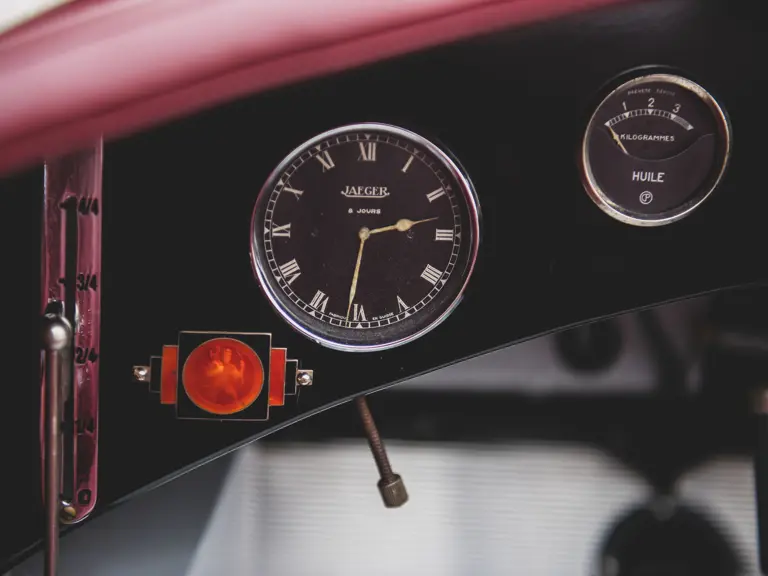
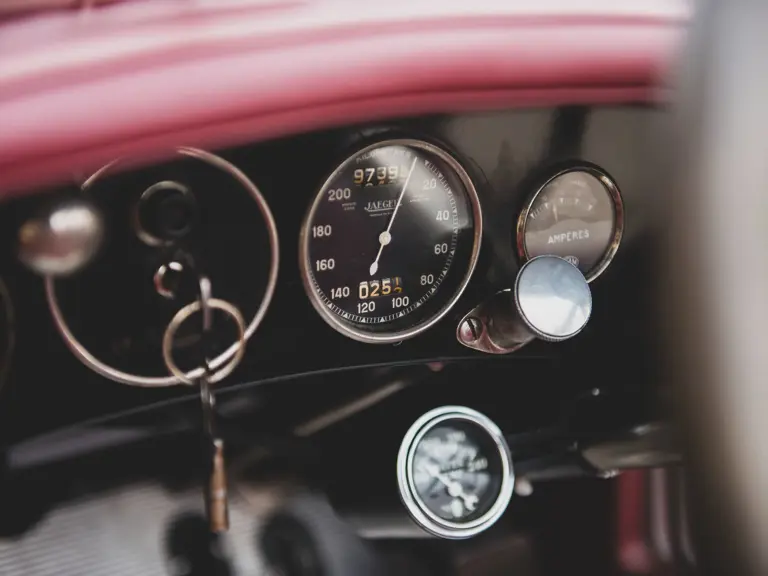
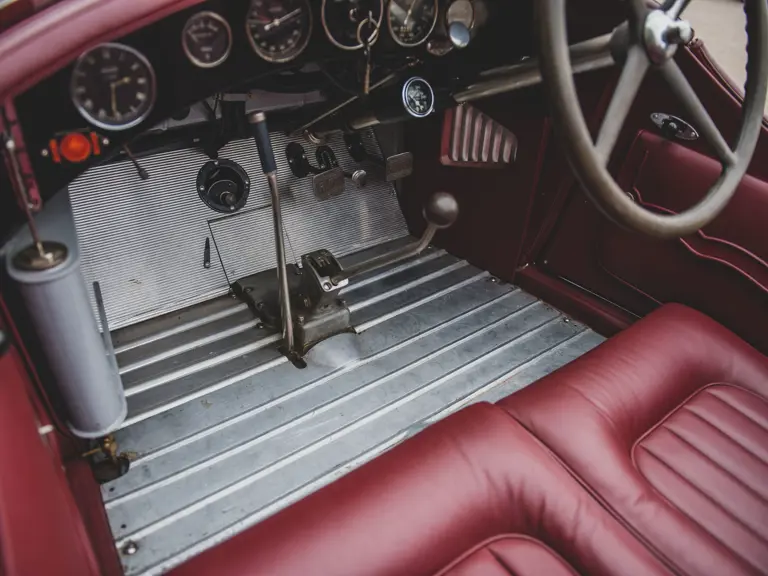
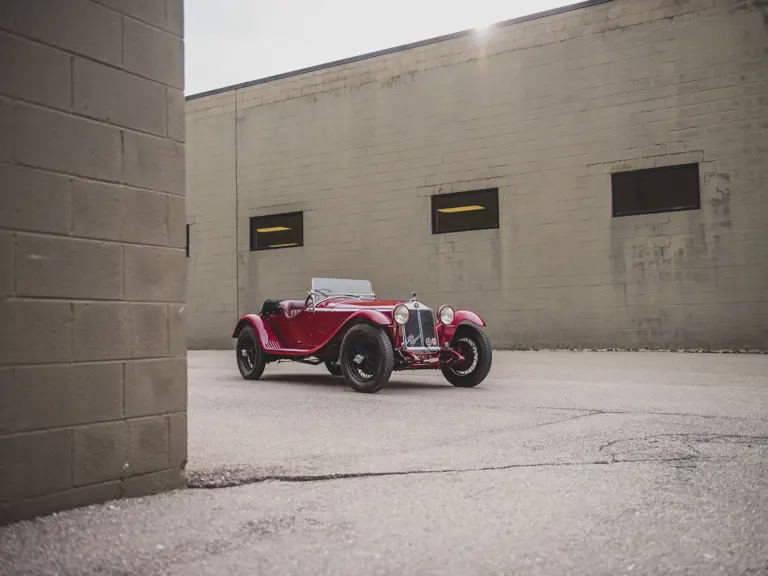
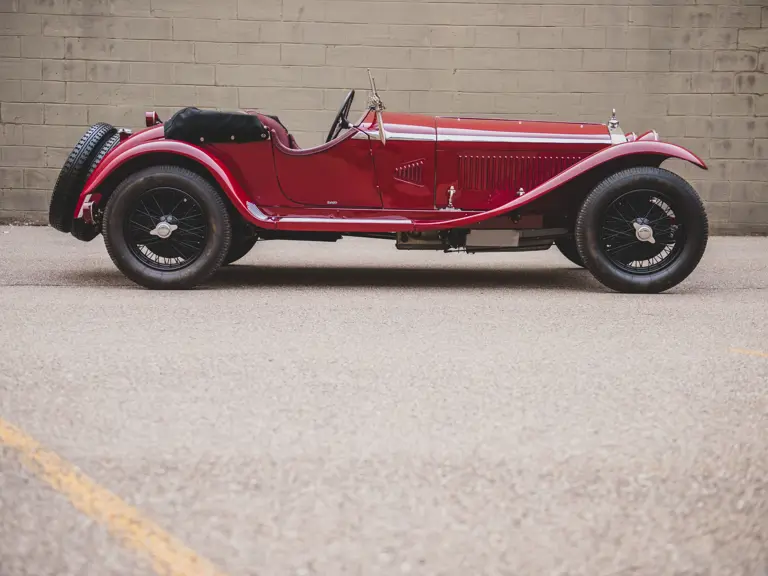
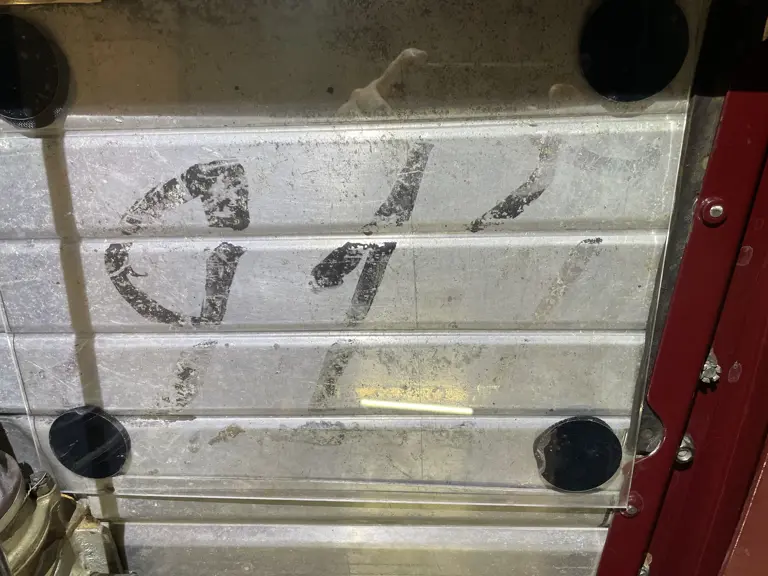
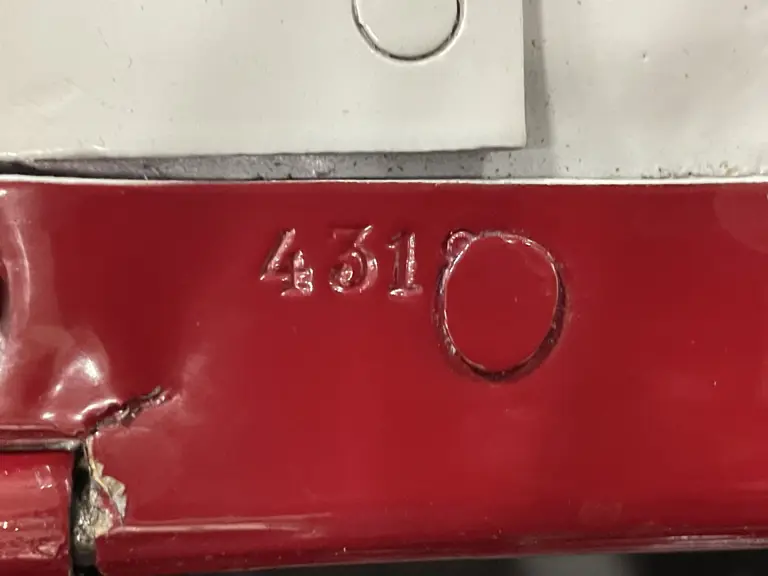
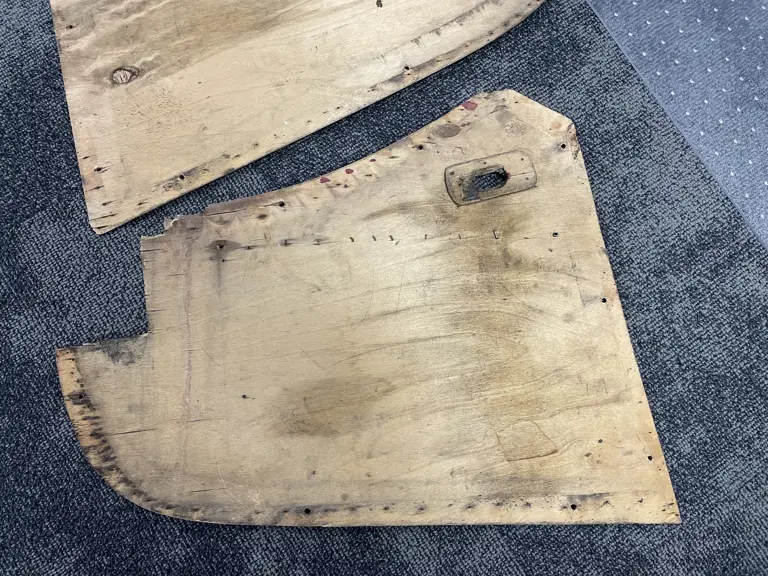
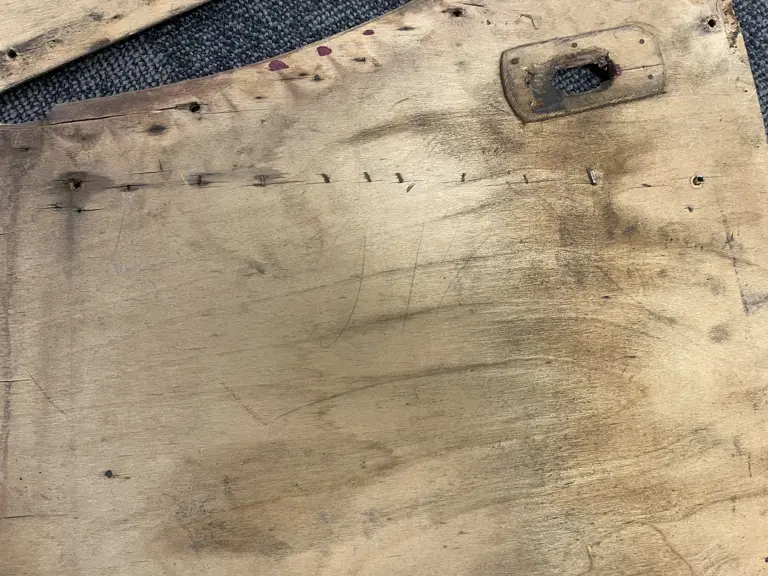
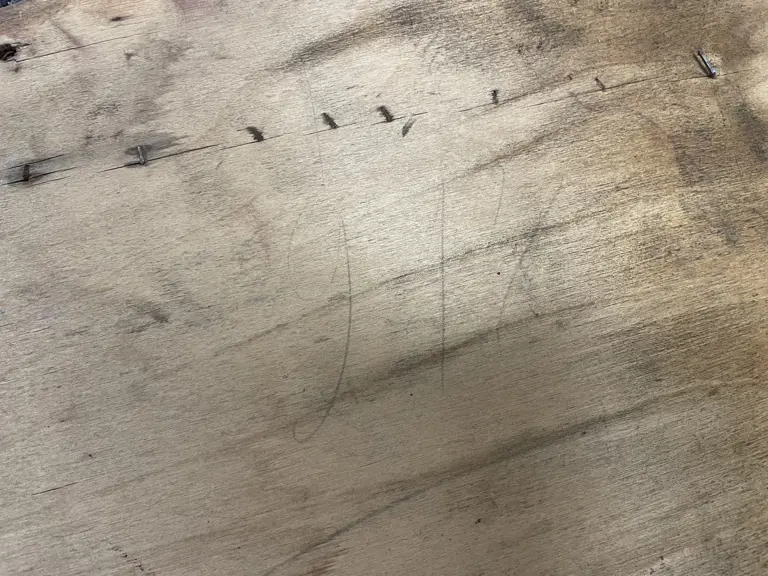
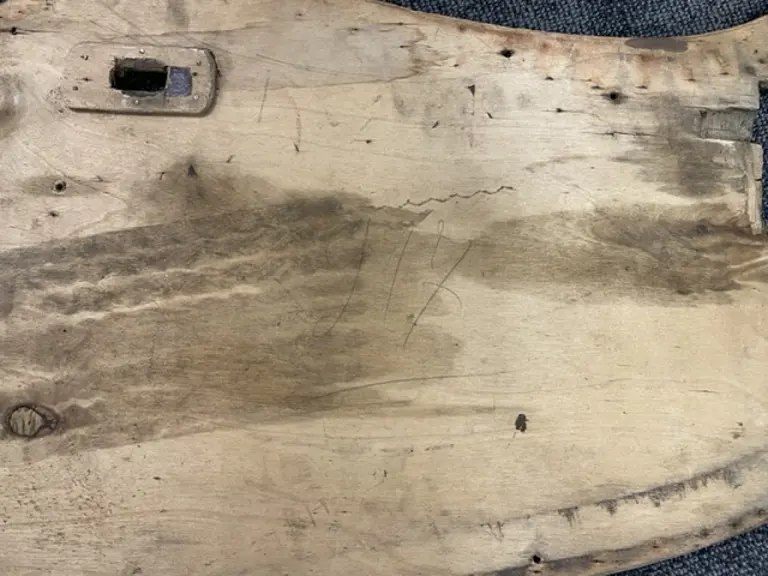
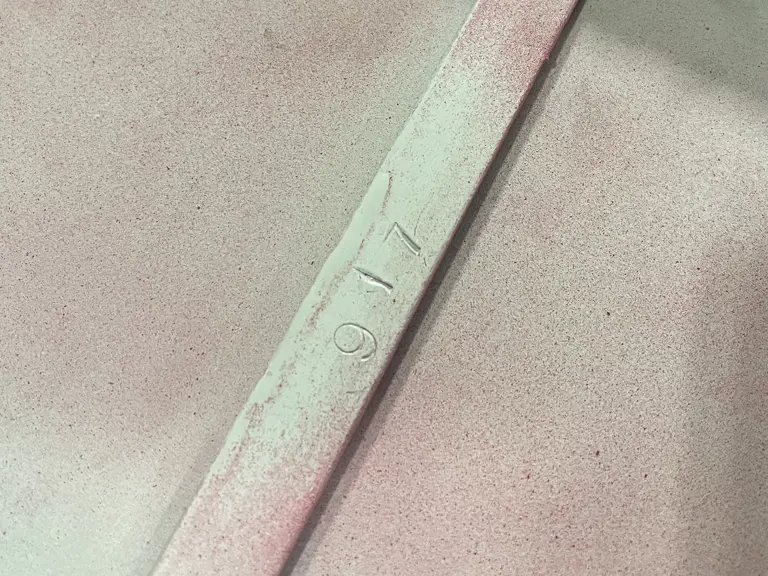
 | Amelia Island, Florida
| Amelia Island, Florida

